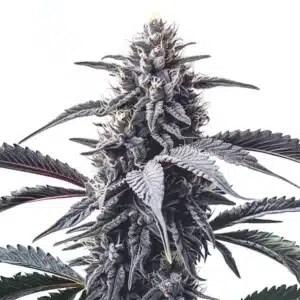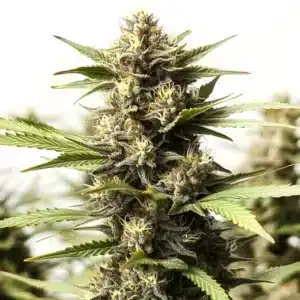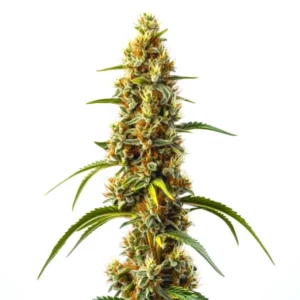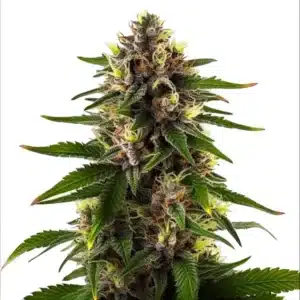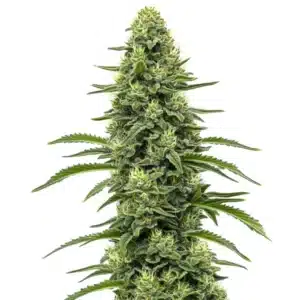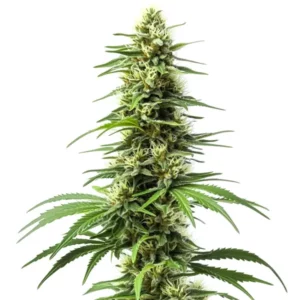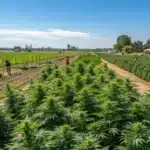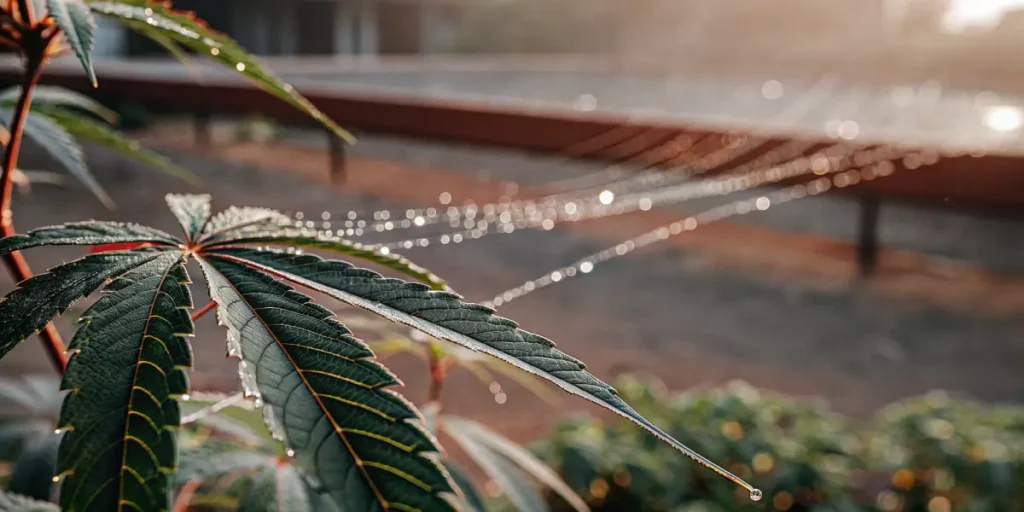
Transpiration and Photosynthesis in Marijuana
Transpiration and photosynthesis in marijuana are two processes that play a critical role in the growth and health of your plants. These processes are like the plant’s breathing and eating systems. They work together to ensure your cannabis gets the necessary nutrients and energy to thrive. When you’re growing marijuana, knowing these processes can make the difference between a bountiful harvest and a disappointing yield.
Transpiration is the process where plants release water vapor from their leaves. This might sound simple, but it’s essential for regulating temperature and nutrient uptake. When water evaporates from the leaves, it creates a vacuum that pulls water and nutrients from the roots. This is how your plants get the nutrients they need to grow strong and healthy.
Recommended Strains
Photosynthesis, on the other hand, is how plants produce food. They use sunlight to convert carbon dioxide and water into glucose and oxygen. This glucose provides the energy that fuels growth and development. Together, transpiration and photosynthesis in marijuana make sure your plants are well-fed and hydrated, promoting robust growth.
Impact of Transpiration on Marijuana Photosynthesis
The impact of transpiration on marijuana photosynthesis is significant. When water evaporates from the leaves, it helps to cool the plant down. This cooling effect is crucial because high temperatures can hinder photosynthesis. By keeping the plant cool, transpiration supports optimal photosynthesis conditions.
Moreover, transpiration assists in maintaining the flow of nutrients. Without this process, nutrients wouldn’t move efficiently from the soil to the leaves, where photosynthesis occurs. This relationship between marijuana photosynthesis and water loss is vital to understand. It emphasizes the importance of a balanced watering routine to ensure your plants aren’t too dry or too wet.
Additionally, transpiration can influence the plant’s internal concentration of carbon dioxide. As water vapor exits the leaves, fresh air containing carbon dioxide enters, which is essential for photosynthesis. This exchange is crucial for maintaining efficient photosynthesis rates, ultimately impacting the plant’s growth and productivity.
Knowing the impact of transpiration on marijuana photosynthesis means recognizing that any disruption can lead to suboptimal growth. Adjusting environmental conditions, such as providing shade during peak sunlight hours, can help manage transpiration rates and protect your plants from stress.
Promos & Deals
Optimizing Transpiration in Cannabis Cultivation
Optimizing transpiration in cannabis cultivation involves controlling environmental factors. Humidity, temperature, and light all play roles in transpiration rates. For instance, high humidity can slow transpiration because the air is saturated with moisture, meaning less water evaporates from the leaves. This effect of humidity on marijuana photosynthesis can lead to less cooling and nutrient uptake.
To optimize transpiration, manage your grow room’s climate. Use dehumidifiers to reduce humidity and fans to increase airflow. This setup encourages consistent transpiration and ensures your plants receive adequate cooling and nutrients. Additionally, keep a close eye on leaf color and texture. Wilting or crispy leaves can signal issues with transpiration that need addressing.
Another key aspect of optimizing transpiration in cannabis cultivation is monitoring soil moisture levels. Overwatering can lead to root rot and decreased transpiration, while underwatering can cause stress, reducing the plant’s ability to photosynthesize efficiently. Striking the right balance ensures that the plant’s nutrient uptake is optimized.
Lighting also plays a crucial role in optimizing transpiration. Providing the right amount of light encourages plants to open their stomata, facilitating both transpiration and photosynthesis. Adjusting light intensity and duration can help create an ideal environment for robust plant growth and development.
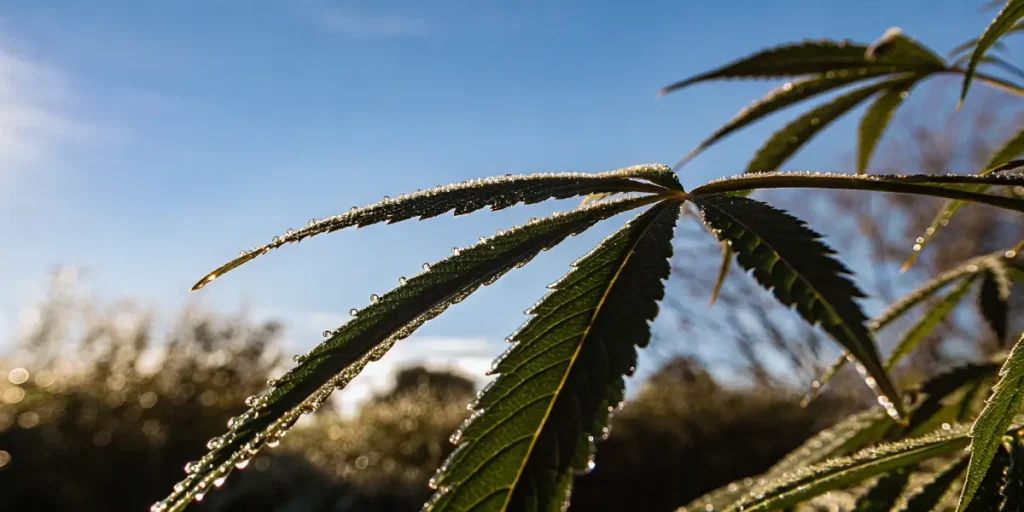
Role of Stomata in Cannabis Transpiration
Stomata are tiny openings on the leaves that control gas exchange. They are crucial for both transpiration and photosynthesis. When stomata open, they allow carbon dioxide to enter the leaves for photosynthesis. At the same time, water vapor exits through these openings during transpiration.
The function of stomata in cannabis transpiration is to balance water retention with nutrient uptake and gas exchange. If the stomata are closed too often, it can limit photosynthesis and slow growth. On the flip side, if they’re open too much, it can lead to excessive water loss and dehydration.
Healthy stomatal function is essential for maintaining the marijuana photosynthesis and water loss relationship. These microscopic openings need to operate optimally to ensure that plants get adequate carbon dioxide for photosynthesis while minimizing unnecessary water loss.
Growers must be mindful of factors that influence stomatal behavior, such as light intensity, humidity, and temperature. By managing these variables, you can ensure that stomata remain balanced, enabling effective transpiration and photosynthesis in marijuana cultivation.
Practical Tips for Cultivating Cannabis
When it comes to cultivating cannabis, choosing the right strains can make a difference. For instance, the Gelato strain is known for its resilience in various climates, making it a good choice for beginners who are learning about transpiration and photosynthesis in marijuana.
Another excellent strain is Gorilla Glue #4. This strain is robust and can handle fluctuations in humidity and temperature, which are critical factors affecting transpiration. It’s perfect for those looking to optimize their growing conditions.
Knowing the specific needs of each cannabis strain can further enhance cultivation success. Some strains may thrive under higher humidity levels, while others prefer drier conditions. Tailoring your growing practices to each strain’s requirements can maximize yield and quality.
Furthermore, regular monitoring and adjusting of environmental parameters like light and temperature can help cultivate healthier plants. Keeping detailed records of each grow cycle can provide valuable insights into what works best for your selected strains, ensuring successful harvests.
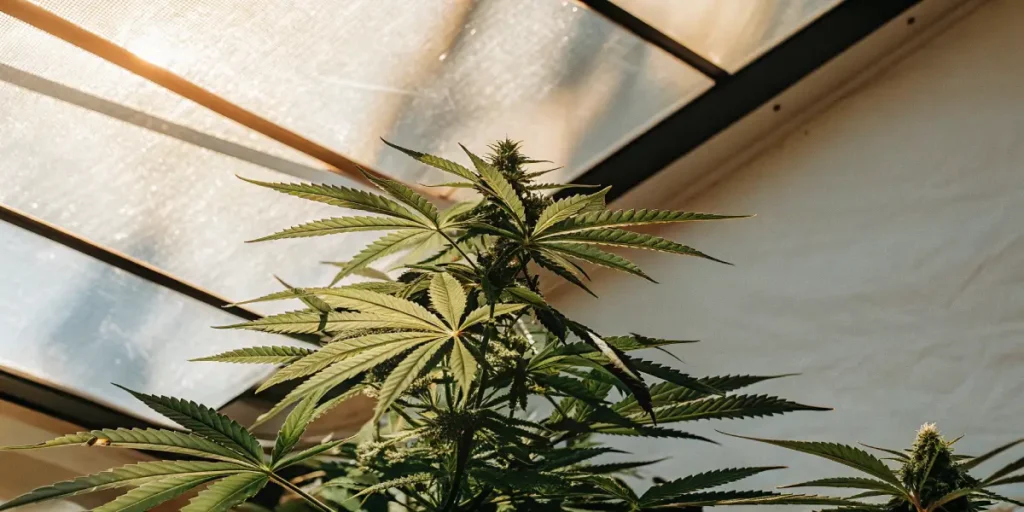
FAQs
How does transpiration affect marijuana growth?
Transpiration affects marijuana growth by controlling the plant’s temperature and nutrient flow. When water evaporates from the leaves, it pulls up water and nutrients from the roots. This process is essential for maintaining the plant’s health and supporting photosynthesis, which in turn drives growth.
Without proper transpiration, your cannabis plants may overheat and fail to receive enough nutrients. This can lead to stunted growth and poor yields. Monitoring environmental conditions like humidity and temperature helps maintain optimal transpiration rates.
The synchronization of transpiration and photosynthesis in marijuana is critical for achieving vigorous growth. Ensuring that plants have access to sufficient water and nutrients allows them to maintain their physiological functions and maximize their photosynthetic capacity.
Moreover, managing air circulation can further support transpiration and photosynthesis processes. Good airflow prevents stagnant conditions, reducing the risk of mold and other issues that can hinder plant growth and development.
What is the relationship between photosynthesis and water loss in marijuana?
Photosynthesis and water loss in marijuana are interconnected through the process of transpiration. As plants photosynthesize, they open their stomata to allow carbon dioxide in. This opening also lets water vapor escape, leading to water loss. This relationship is crucial because it ensures that plants remain cool and continue nutrient uptake.
Balancing this relationship involves providing the right amount of water and maintaining ideal growing conditions. This balance helps keep your plants healthy and supports their ability to photosynthesize effectively, leading to better growth and higher yields.
Managing the marijuana photosynthesis and water loss relationship requires careful observation of plant responses to environmental changes. By adjusting factors such as light exposure and watering schedules, you can help maintain equilibrium and facilitate optimal plant performance.
Furthermore, employing techniques like mulching can help regulate soil moisture levels, reducing water stress on plants and promoting consistent transpiration and photosynthesis rates.
Why is it important to optimize transpiration for cannabis cultivation?
Optimizing transpiration for cannabis cultivation is vital because it influences plant health and yield. Proper transpiration ensures that plants can regulate their temperature and maintain efficient nutrient uptake. This optimization leads to robust growth and maximized photosynthesis.
By controlling environmental factors like humidity, light, and temperature, you can enhance transpiration. This control helps prevent issues like nutrient deficiencies and heat stress, ensuring your cannabis plants grow to their full potential.
Developing a keen knowing of how different environmental conditions affect transpiration can improve overall cultivation practices. This knowledge allows growers to make informed decisions that enhance plant health and productivity.
Moreover, technologies such as automated climate control systems can assist in maintaining the ideal conditions for transpiration and photosynthesis in marijuana, leading to more consistent and successful harvests.
How does humidity affect marijuana photosynthesis?
Humidity affects marijuana photosynthesis by influencing the rate of transpiration. High humidity levels can slow down transpiration because the air is already saturated with moisture, reducing water evaporation from the leaves. This reduction can impact the plant’s ability to cool itself and absorb nutrients.
To manage this, keep humidity levels balanced in your grow room. Using dehumidifiers and ensuring proper airflow can encourage healthy transpiration rates, supporting effective photosynthesis and leading to healthier plants and better harvests.
The effect of humidity on marijuana photosynthesis also extends to disease prevention. High humidity can foster mold and mildew growth, which can damage plants and reduce photosynthetic efficiency. Maintaining a balanced humidity level helps prevent these issues.
Regularly monitoring humidity with reliable sensors can provide real-time data, allowing growers to make timely adjustments to environmental conditions and maintain optimal photosynthesis in their cannabis crops.
What are stomata, and why are they important for cannabis plants?
Stomata are small pores found on the surface of leaves. They play a key role in gas exchange by allowing carbon dioxide to enter the plant for photosynthesis and letting oxygen and water vapor exit. This function is crucial for both photosynthesis and transpiration.
For cannabis plants, healthy stomata mean efficient photosynthesis and water regulation. By ensuring that your plants are not stressed and maintaining an ideal environment, you help keep the stomata functioning properly, which is essential for the plant’s overall health and productivity.
The function of stomata in cannabis transpiration is vital for maintaining the balance between water retention and gas exchange. Proper stomatal function ensures that plants can maximize photosynthesis while minimizing water loss, contributing to healthy growth.
Additionally, knowing the factors that influence stomatal behavior, such as light and humidity, allows growers to optimize conditions for transpiration and photosynthesis, ultimately leading to more productive cannabis cultivation.




